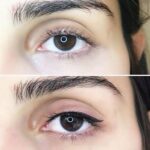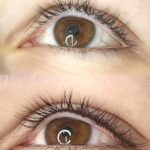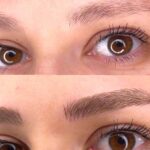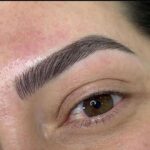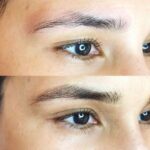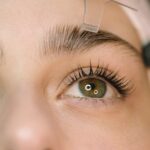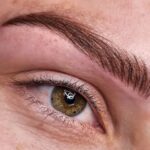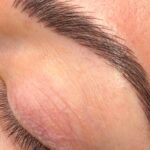
Combination brows, a unique technique blending microblading and shading, has gained popularity for delivering natural yet defined eyebrows. Understanding the healing process of combination brows is essential for those considering this treatment, as it directly influences the final appearance of the brows. When properly cared for, the healing phase can lead to beautiful, long-lasting results. This article will explore the combination brows healing process in detail, including timelines, aftercare, and what to expect during healing.

The Healing Timeline: What to Expect
The healing timeline for combination brows varies depending on individual skin types and the specific techniques used. Generally, the healing process can be segmented into several phases. Initially, your brows will be slightly swollen and may appear darker than expected right after the procedure. This is normal and should subside within the first few days. In the days following the treatment, scabbing will form as the skin starts to heal. This scabbing can last anywhere from 5 to 14 days; thus, knowing what to expect helps manage your anxiety during this phase. By approximately day 14, the majority of the healing should be complete, but the final color saturation can take a few weeks to fully settle. Patience during this period is key to achieving optimal results.

Initial Aftercare: Essential Steps
Caring for your combination brows immediately after the procedure is vital for ensuring a successful healing process. Here are some essential aftercare tips to follow:
-
- Keep the Area Dry: Avoid wetting your brows for the first few days post-procedure to prevent infection.
- Avoid Touching: As tempting as it might be, do not touch, scratch, or pick at the scabs. This can lead to scarring and interfere with the healing.
- Use Recommended Products: Follow your technician’s advice on using ointments or creams to facilitate healing.
- Skip Makeup: Refrain from applying makeup on or near the brows during the healing process to avoid irritation.
- Avoid Sun Exposure: Protect your brows from direct sunlight as UV rays can fade the pigments and jeopardize the results.
Following these guidelines diligently can lead to optimal healing and beautiful results. It’s important to listen to your body and adjust your aftercare if irritation or unexpected symptoms occur.

Common Healing Challenges
While the healing process for combination brows is usually smooth, some individuals may experience challenges along the way. One common issue is excessive itching during healing, which can be quite uncomfortable. It is crucial to resist the urge to scratch, as this can lead to more significant problems like scarring or loss of pigment. Another challenge could be uneven healing, where one brow appears to heal differently than the other. This can happen due to differences in skin texture or healing responses. Finally, color adjustments may be necessary after the initial healing phase, as the pigment may lighten more than anticipated. Scheduling a touch-up appointment after completing the healing process is usually advised to correct these issues.
Maintaining Your Brows Post-Healing

Once the initial healing process is complete, maintaining your combination brows is essential for longevity. Here are some tips to help you keep your brows looking their best:
- Avoid Harsh Products: Steer clear of exfoliating scrubs and strong skincare ingredients around the brow area.
- Regular Touch-Ups: Commit to scheduled touch-up sessions, typically every 6 to 12 months, to maintain color intensity.
- Sunscreen Application: Protect your brows from sun damage by applying a gentle sunscreen if you’re outdoors.
- Stay Hydrated: Well-hydrated skin can prolong the appearance of your brow pigments.
- Monitor Any Changes: Keep an eye out for any changes in color or shape, and consult your brow technician if issues arise.
By following these maintenance tips, you can enjoy beautiful brows for an extended period, maintaining both the color and the overall appearance.
Conclusion
The healing process for combination brows can be an exciting yet daunting journey for those seeking stunning eyebrow results. By understanding the healing timeline, adhering to aftercare instructions, managing potential challenges, and maintaining your brows post-healing, you can contribute to the longevity and vibrancy of your new look. Remember that each individual’s experience is unique, and your brow technician can provide personalized advice to ensure the best healing outcomes. With patience, care, and attention, you will soon enjoy a pair of combination brows that enhance your natural beauty.
FAQs About the Combination Brows Healing Process
The healing process can take anywhere from two weeks to a month, depending on individual skin types and aftercare compliance.
2. Is it normal for brows to appear darker immediately after the procedure?
Yes, it is entirely normal for brows to appear darker immediately after the procedure due to the fresh pigment. This will lighten as healing progresses.
3. Can I remove scabs or touch my healing brows?
No, you should not touch or remove scabs during the healing process, as this can lead to complications such as scarring or uneven pigment.
4. When should I schedule a touch-up appointment?
Typically, touch-up appointments are recommended 6 to 8 weeks after the initial procedure to assess and adjust any fading or uneven areas.
5. What should I do if I experience excessive itching or irritation?
If you experience excessive itching or irritation, avoid scratching and consult your brow technician for advice. They may provide solutions or recommend products to soothe the area.
